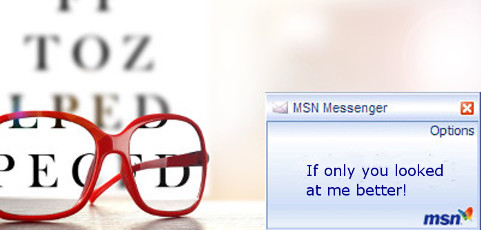What your audience want is not written in communication manuals, rather in their minds. What lights their fires you ain’t going to find it on Google, on their facial expressions. What their are willing to do, in their behaviours.
A little story
Many years ago I worked in Galactica and almost everyone in the office was using Messenger as an internal communication tool. We exchanged business lines like “Sara called and she was happy with the quote” and others not strictly related to work “crazy hairdo what’s happened?”. Every time you received an instant message (IM) a little notification window was popping up. You could use your name, or any nickname you fancied. I could use Paolo but also El Merendero or Life on Mars? if I wanted to. Here it comes the point I want to make. Many changed their nicks according to their mood or what happened to them. Basically they updated it as a sort of communication to reflect their status. Thus Abelardo, a fantasy name of course, was becoming “Lonely heart”, while Maria Antonietta was morphing from “Blooming spring” to “It all happens to me”. Sometimes it was challenging to figure out who was “Bless the mirror” or “Arsenio Lupin”. All of that seasoned with a mix of Emoticons. It was 1999.
People talk
Messenger’s nickname wasn’t designed to convey feeling or anything like that, and that seems quite logical. But user came up with a creative new way of using it, taking advantage that every time you changed it everyone was notified. Basically they anticipated by ten years or so, Facebook status update. Just by watching my colleagues behaviour I could have spot the need for a tool to express a status update, up to the point of using something else for that. Audience needs, human needs more in general, will eventually always surface, maybe by bending whatever else occurs to be available.
Answering those people needs it leads to be successful, almost a guarantee of a positive audience reaction. It’s not only about what they want to do. It could be how they want to do it, or which kind of information they want to receive of in which way is more appropriate.
When we deliver a presentation our target is to transmit a message and pursue an intent. It could be to inform them, to persuade them or to motivate them to an action. In all scenarios conveying our ideas (and proposals) with the tools, approaches and media more apt for them could be the watershed between being successful or squandering a chance.
Understanding the audience
So, which shrewdness can you use to better grasp who is the audience and how to address them? At least three of them.
First, learn to read the public. Don’t focus only on yourself and your message. Observe how they react, what resonate with them and raise their interest. Facial expressions, postures (like lifting the eyes from their tablets!) are all signs you shouldn’t miss. It’s a must to look at them, analyse and act consequently. Give them attention, use your critical sense to make out what works and what doesn’t. Adapt your content and how you convey it to what you learned.
Second one is to try to change your delivery, even more when you are doing the same gig over and over. The previous point was about learning every time and adapt accordingly. So the next time you want to put in practice and improve based on experience. Also if you always deliver the exact same way you have nothing different to evaluate. Try new approaches, new media, new structures (speech outlines) and see how they are received. Add some videos, interactive sessions, look what it happens.
Last point, not less important, try to leave some freedom to the audience. Freedom to express themselves and drive a bit the presentation. Like the messenger story, if you give them a chance, they’ll show you the best way. You don’t have to stretch yourself to much, or leave them the stage. Just a little bit of space can yield you unexpected results!


Recent Comments